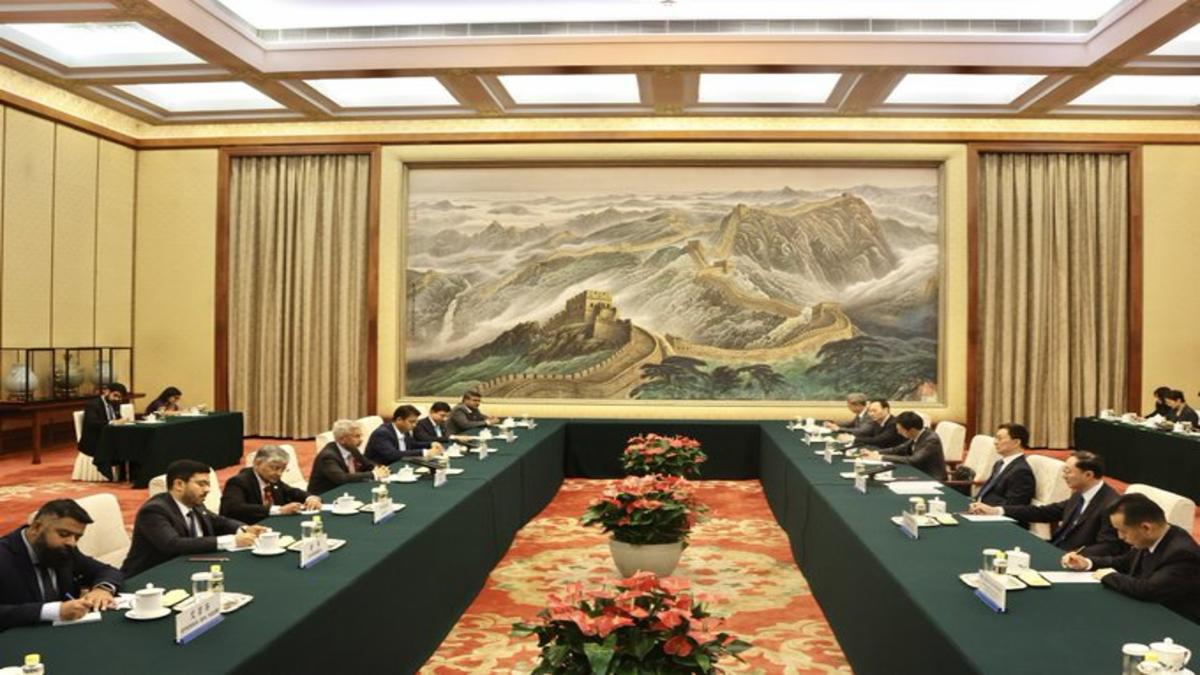Article Body
In the shadow of Galwan: A symbolic handshake stirs old wounds
Under the watchful eyes of history and Himalayan peaks still echoing with tension, India’s External Affairs Minister S. Jaishankar stepped onto Beijing soil on Monday—his first visit to China since the fatal 2020 Galwan clash that claimed the lives of 20 Indian soldiers. Inside the ornate Great Hall of the People, he shook hands with Chinese Vice President Han Zheng, marking a pivotal moment: not of resolution, but of re-engagement.
But was this just diplomacy’s theatre—or the start of something more substantial?
Why this visit matters now: The 2024–25 strategic backdrop
Geopolitics in Asia is in flux. With India assuming the chair of the Global South bloc in several forums, and China deepening economic ties with Russia and Iran, Jaishankar’s China visit couldn’t have been more timely—or risky.
Just last month, satellite imagery reviewed by Stratfor Global Intelligence showed new Chinese military infrastructure close to the Line of Actual Control (LAC), raising eyebrows in Indian intelligence circles. And yet, this visit went ahead.
“Diplomatic engagement is essential—even with adversarial neighbors,” said retired Indian ambassador Nirupama Rao, speaking to The Diplomat. “But engagement without clarity on border de-escalation could prove strategically naive.”
What was discussed?
Jaishankar’s agenda included:
-
Reviewing progress on corps commander-level military talks—which have stalled since February 2024
-
Reopening of border trading posts in Arunachal Pradesh and Sikkim
-
Calls for resuming direct commercial flights between major cities
-
Inviting Chinese participation in India’s proposed BRICS tech corridor
Han Zheng, in return, reiterated the Chinese government’s desire to “bring bilateral ties back on a healthy track” while avoiding “sensitive issues that undermine mutual trust”—a veiled reference to Arunachal Pradesh, recently renamed “Zangnan” by Beijing in official maps.
Is this a real thaw—or just optics?
India’s Ministry of External Affairs (MEA) released a cautiously worded statement: “Both sides acknowledged the need to restore normalcy, with an emphasis on continued military and diplomatic dialogue.”
Translation: no breakthroughs, but no breakdown either.
According to a leaked note from the Indian delegation (verified by ThePrint), China refused to commit to full disengagement at Depsang and Demchok, the last two friction points. Instead, they proposed a “zone of mutual security”, which Indian negotiators see as legitimizing the PLA’s post-2020 positioning.
“Can Galwan ever be forgotten?”
A trending Google query this week—“Can India-China relations normalize after Galwan?”—captures the public skepticism. National sentiment remains raw.
The answer isn’t simple.
“Galwan wasn’t just a border clash—it was a psychological rupture,” said defense analyst Lt. Gen. D.S. Hooda (Retd.). “Any attempt at normalization must begin with transparency and disengagement. Right now, that’s not on the table.”
Why Jaishankar went anyway: Strategic imperatives
The Modi government has made clear that strategic autonomy remains a pillar of India’s foreign policy. Re-engaging China doesn’t mean endorsing its aggression—it’s about keeping dialogue alive in a polarized global order.
Three reasons why this visit couldn't wait:
-
Avoiding dual-front pressure with Pakistan amid renewed LoC skirmishes
-
Bracing for a potential Taiwan Strait crisis post-U.S. elections
-
Protecting trade routes—India’s exports to China crossed $20 billion in FY24, and lithium supply chains depend on stability
What’s at stake for India and the world?
Key takeaway: The Jaishankar-Han meeting was less about resolution and more about relevance.
If India and China can’t establish a minimum baseline of trust, the risk isn’t just in Ladakh—it’s in global forums, tech standards, climate talks, and South Asian infrastructure diplomacy.
A frosty border means India’s Act East policy gets frozen too. It weakens the Indo-Pacific Quad, which depends on Delhi’s confident engagement.
What comes next?
🔹 The next corps commander meeting is scheduled for August 2025, location undecided.
🔹 Chinese Foreign Minister Wang Yi may visit Delhi before year-end—if groundwork permits.
🔹 Expect a bilateral track at the BRICS 2025 Summit, with Russia pushing for India-China cooperation.
But the real test? Public sentiment and military restraint on both sides. One misstep on the LAC, and this fragile détente could shatter.
What should readers watch for?
-
Satellite imagery from LAC hotspots like Depsang and Pangong
-
Statements post-BRICS and SCO meetings in October
-
Any shift in Chinese media tone (Xinhua, Global Times)
India must balance deterrence with diplomacy. For citizens, this means supporting accountability—not just handshake headlines.
Ask yourself:
Do symbolic visits matter more than substantive action? Would you trust peace built on ambiguity?
🔁 Share this if you believe diplomacy must follow principle—not posturing.
💬 Comment below: Should India suspend border talks until China withdraws from all intrusion points?
Infographic idea:
Timeline of India-China border diplomacy post-Galwan (2020–2025), with military flashpoints and key bilateral meetings.
FAQ Section:
Q1. Why did Jaishankar visit China now?
To resume diplomatic engagement stalled since 2020 and discuss border de-escalation, trade, and BRICS cooperation.
Q2. Did the visit lead to any breakthroughs?
No concrete breakthrough was announced. Talks are continuing, but core border issues remain unresolved.
Q3. What’s the current status at the LAC?
Tensions persist at Depsang and Demchok. While some areas saw disengagement, Indian troops remain on alert.
Final Thought:
This wasn’t détente. This was diplomacy by necessity. But necessity, when driven by courage, can still seed transformation. Let’s hope this meeting becomes more than a photo op—and less than a missed opportunity.

Comments